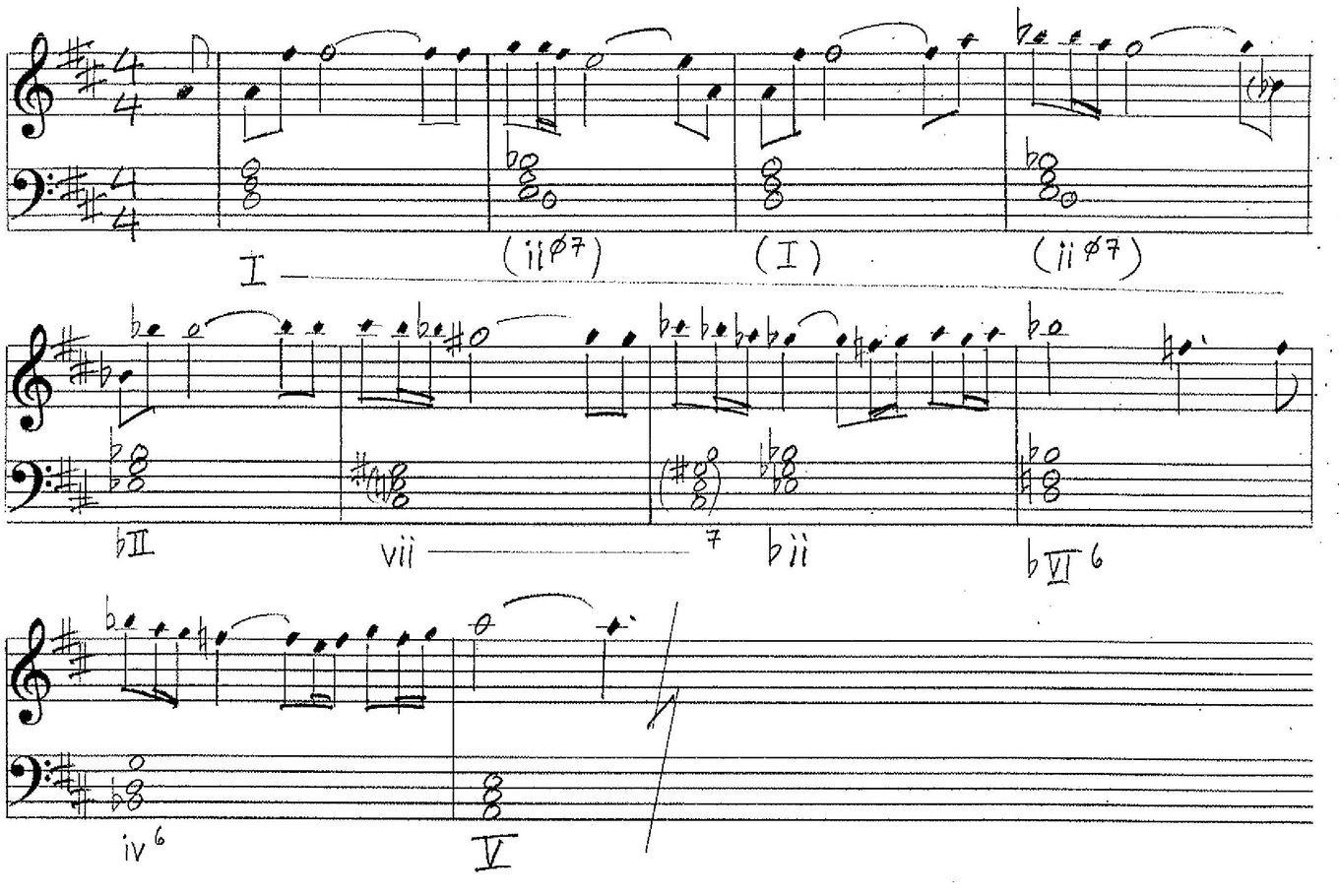"Governor Tarkin, I should have expected to find you holding Vader’s leash," says Princess Leia Organa upon being taken prisoner on the Death Star in Star Wars IV: A New Hope. "I recognized your foul stench when I was brought onboard.”
She may be the only important female character in the franchise's original film, but Princess Leia is no damsel in distress. How do you write music for a character who, on one hand, is a member of the Imperial Senate, a key figure in the Rebel Alliance and part of Alderaan's royal family, and on the other hand indulges in petty zingers? (She calls Chewbacca a "big walking carpet.")
That was one of John Williams's challenges when he composed the film's Oscar-winning score back in 1977, using a number of leitmotifs to identify and follow characters through the movie. Forty years later, we analyze how he captured Princess Leia's inherent contradiction in one of the score's most enduring highlights.
Below, we transcribed the theme (minus the flute/oboe intro) and did a basic harmonic analysis.

Tonality
Williams set Princess Leia's theme in D major, a key associated with overachievers and negotiators (according to Paolo Pietropaolo's Signature Series), which Leia certainly is: at 18, she became the youngest senator ever of the Galactic Empire and would later be instrumental in establishing the New Republic. But as the theme is developed, Williams consistently visits the flat side of the key (especially the flattened supertonic and submediant), whose instability underlines the other important facet of Leia's character: she's the film's romantic lead. Beneath her tough exterior is a living, breathing human being, subject to her desires and emotions.
Melody
The melody of Princess Leia's theme is built of two distinct cells that reflect her character's inherent contradiction. The first is an upward leap of a major sixth, from the dominant to the mediant. While large melodic leaps traditionally imply heroism and confidence — Otello's "Esultate!" in Act 1 of Verdi's Otello comes to mind — Williams tends to use the major sixth for his love themes. (Marion's theme from Raiders of the Lost Ark is another good example.) The melody's second component, and the one Williams develops more fully, outlines a falling third using an eighth and two 16th notes, and keeps the tune hovering around the unstable second, third and fourth scale degrees. This is Leia's vulnerability and yearning, the private side of the woman who, in public, is the leader of the Rebellion.
This yearning reaches a local peak in measure 4 when it hits the flattened submediant. The melodic climax of the theme arrives two measures later, when the leading tone sets off a descending chromatic sequence whose goal, in measure 10, is the dominant scale degree.
Harmony
The first four measures of Princess Leia's theme establish not only the main melodic material, but also the tonality through a prolongation of tonic harmony. Williams uses a half-diminished seventh chord built on the supertonic on the downbeats of measures 2 and 4 over a tonic pedal, as the melody inches upwards (and then recedes). It's an affectation that gets overused in pop music (this R. Kelly song really abuses it), but in tasteful doses it achieves the desired sense of nostalgia.
In measures 5 to 8, Williams fragments the melodic material and engages in a bit of modal interchange, progressing through Lydian and Phrygian colours built on the flattened supertonic. (For an in-depth look at Williams's voice-leading, in the greater context of American film music of the 20th century, check this out.) The temporary goal of this progression is B-flat major (flat VI), which arrives in measure 8 following an implied V-I cadence. Then, in the following two measures, we have true predominant harmony for the first time, getting us to V and poised for a repeat of the theme.
Instrumentation
The first statement of Princess Leia's theme, heard when she's captured by Darth Vader, is scored for French horn accompanied by upper strings. The horn is an interesting choice, since it's often associated with hunting calls and big, heroic passages in late Romantic symphonies. Here, however, the solo horn's far-away sound, floating over the shimmering violins, suggests solitude and self-doubt in the face of overwhelming odds.
At the theme's next appearance, when R2-D2 plays Leia's holographic message for Obi-Wan Kenobi, the melody is played by the solo oboe (2:37 in the video below). This is a more typical choice for such a poignant theme that, like the best film music, lets us in on the characters' thoughts — in this case, the oboe underscores Obi-Wan's unspoken reaction to Leia's message and his realization that Luke, who has no idea Leia is his sister, will be instrumental in the Rebellion's success.
Princess Leia's theme would recur in The Empire Strikes Back and Return of the Jedi, and be revived in the original scores for the "prequel" trilogy as well.
The music also accompanied Carrie Fisher's walk-on when she participated in this George Lucas roast in 2009:

A celebration of iconic film scores which have exhilarated, saddened, terrified, or just plainly creeped us out over the past half century. Hear: Themes from Jaws, The Omen, Blade Runner, Chariots of Fire and more!
More to explore:
Star Wars A to Z, an illustrated guide
